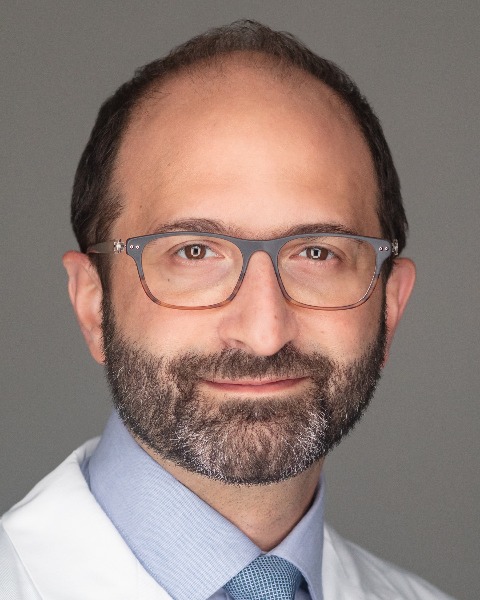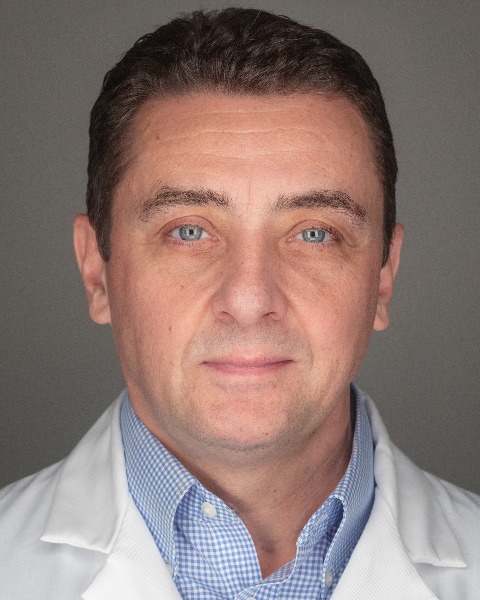Interventional Oncology
Pre-operative portal vein embolization to promote primary and secondary liver tumor resection
- SM
Sebastian Maletz, BS
Medical Student (MS2)
USF Health Morsani College of MedicineDisclosure(s): No financial relationships to disclose
- RM
Rahul Mhaskar, n/a
medical student
USF Health Morsani College of Medicine 
Ghassan El-Haddad, MD
Senior Member Interventional Radiology, Medical Director Radionuclide Therapy Program
Moffitt Cancer Center and Research Institute- DA
Daniel Anaya, MD
SR MBR SURGICAL ONCOLOGY
Moffitt Cancer Center - JD
Jason Denbo, MD
ASST MBR SURGICAL ONCOLOGY
Moffitt Cancer Center 
Bela Kis, MD, PhD, FSIR (he/him/his)
Chief of Interventional Radiology
Moffitt Cancer Center
Poster Presenter(s)
Author/Co-author(s)
Outcomes following surgical resection of liver malignancies are highly dependent on the volume and functionality of the future liver remnant (FLR). Portal vein embolization (PVE) induces FLR hypertrophy, enabling curative resection in patients who were previously not surgical candidates. However, approximately 30% of PVE patients do not receive hepatectomy, and PVE limits the availability of liver-directed therapies and the diagnostic value of future imaging studies due to embolization material artifacts. Our study seeks to compare outcomes of PVE patients who receive liver resection with those who undergo PVE alone, as well as to evaluate potential contributing factors.
Materials and Methods:
A retrospective review of medical records and imaging was performed for 62 patients who underwent PVE in a tertiary cancer center between January 2015 and December 2021. Liver volumes and FLR hypertrophy were measured using pre- and post-PVE CT scans. Survival analyses were performed with the Kaplan-Meier method and log-rank testing. The effects of various factors on FLR hypertrophy were examined using univariate and multivariate analyses.
Results:
73% of patients underwent hepatectomy following PVE. These patients had significantly improved overall survival times (p< 0.001), with 84% of resected patients and 35% of unresected patients surviving at 24 months. Median overall survival was 21.4 months (95% CI = 18.1-24.7) among unresected patients, while the median was not reached for resected patients. Median progression-free survival time was significantly longer among resected patients, it was 14.7 months (95% CI = 11.2-18.1) compared to 4.3 months (95% CI = 0.0-8.7) among those who received PVE alone. FLR hypertrophy was not significantly different among unresected (9.7 ± 1.3%) and resected patients (10.9 ± 0.7%). Resection was most frequently forgone due to disease progression (n=9). Likelihood of resection was associated with primary tumor differentiation (χ2=7.931, p=0.019), with post-hoc testing revealing that patients with poorly differentiated tumors were less likely to receive resection (p = 0.042).
Conclusion:
In our study, 27% of patients who received pre-operative PVE did not undergo resection, most frequently due to disease progression. These patients had shorter overall and progression-free survival times compared to the group that underwent hepatectomy. Further analysis of a larger patient cohort is needed to evaluate which patient or disease characteristics are associated with unresectability after PVE.

.png)
.png)
.jpg)
.png)
.jpg)
.png)
.jpg)
.png)
.png)